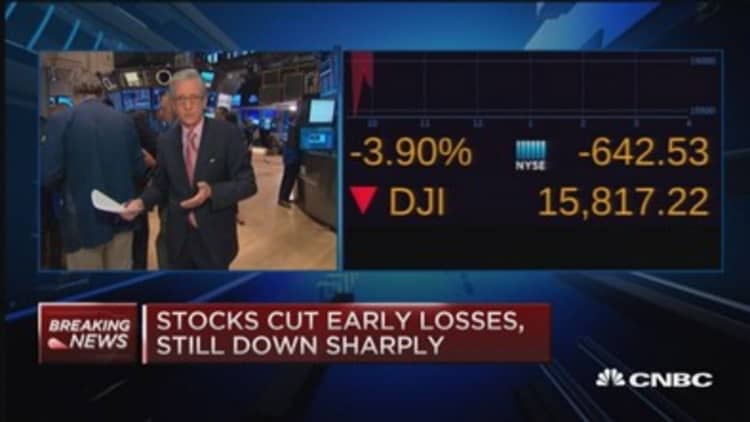
In 2012, the Securities and Exchange Commission revised the system-wide circuit breakers that would halt the broad market under times of severe stress.
Under those rules, trading halts occur when the decreases 7 percent (Level 1), 13 percent (Level 2), and 20 percent (Level 3) from its previous close.
A market decline that triggers a Level 1 or Level 2 circuit breaker before 3:25 p.m. EDT halts trading for 15 minutes. A similar decline after 3:25 p.m. will not halt trading.
A market decline that triggers a Level 3 circuit breaker, at any time during the trading day, will halt market-wide trading for the remainder of the trading day.
Under these rules, there would be halts at the following levels on the S&P 500:
- Level 1 = 1832.92
- Level 2 = 1714.67
- Level 3 = 1576.71
Individual stock circuit breakers: limit up, limit down. The exchanges and the SEC have also implemented uniform circuit breakers for individual stocks.
The rules vary depend on the stock price and when the declines occur. In general, trading on individual stocks with a price above $3 will be halted for five minutes when a price decline of more than 5 percent below the average price of the stock over the immediately preceding five-minute period occurs. The same holds for a corresponding rise in price.
For the 15-minute period right after the open and before the close (9:30 a.m. to 9:45 a.m. and 3:45 p.m to 4 p.m.), a halt will only occur if a stock declines 10 percent or more.


